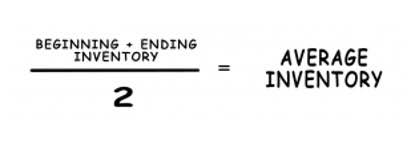
If we didn’t assume companies would keep operating, why would be prepay or accrue anything? The going concern concept means a business can going concern ‘run profitable’ for an indefinite period until the concern is stopped due to bankruptcy and its assets are gone for liquidation. For example, when a business ceases trading and deviates from its principal business, the concern would likely stop delivering profits in the near-term future.
Revenue Recognition Concept
- Unless the company discloses, it is assumed that it possesses adequate assets for fulfilling long-term liabilities.
- However, generally accepted auditing standards provide an auditor with guidance regarding the need to take a company’s ability to operate successfully into account.
- For example, instead of valuing their asset at current market prices or at liquidation prices, a business can carry such assets to the extent of their expected future benefits.
- Adhering to standards like ISA 570 (Revised), auditors uphold the integrity of financial reporting.
- Explore “Going Concern KPMG” assessment and management strategies for businesses to ensure financial stability and growth.
- For example, the original cost of stationery is insignificant to the users of financial statements.
In case the management’s judgment is flawed, it may lead to erroneous financial reporting. For instance, if the management takes the view that the company will recover from its financial troubles and it doesn’t, the financial report may not be indicating the real state of affairs regarding the company’s going concern status. The going concern concept directly affects some of the most relevant parts of financial statements; this is how it affects the balance sheet, profit and loss statement, and cash flow statement. The going concern concept or going concern assumption states that businesses should be treated as if they will continue to operate indefinitely or at least long Sales Forecasting enough to accomplish their objectives.

How a going concern qualification affects a business

It is always important for business accountants and owners to clearly understand the basic accounting concepts. Such understanding helps in integrating uniformity and consistency within the business accounting processes. Yet, by using the Financial Statements prepared based on Periodicity Assumption, management has weekly, monthly, or quarterly to assess and analyze the company’s performance and financial status. This concept is prepared according to nature and life cycle rather than the accounting period. This assumption is mostly used to prepare Income Statements rather than Balance Sheets.

Instructions for an Auditor

The accrual and prepayment of expenses is another illustration of the going concern assumption. Companies believe they will continue to operate in the future; therefore, they prepay and accrue expenses. This occurs because some company-specific assets, including specialised software, may be less valuable when sold to outside parties than what was paid for them. Additionally, if a business needs to sell its assets quickly, it might not have the time to wait for the best possible price. An accountant must disclose in their audit report if they have any grounds to believe that a company won’t be able to meet its obligations, operate as a going concern, and safeguard its assets. Again, the going concern principle depends a lot on management assumptions regarding net sales the future of the company.

Why is the Going concern principle important?
- In the same way, the going concern concept may hinder the accurate assessment of real financial health, particularly during times when the company is under serious challenges.
- Setting up provisions for possible bad debts based on past trends, for example, demonstrates a responsible approach to risk management.
- For example, the rise and fall of volume in steel products may affect revenue, hindering profitability due to fixed cost.
- Examples of tangible assets that might be sold at a loss include equipment, unsold inventory, real estate, vehicles, patents, and other intellectual property (IP), furniture, and fixtures.
- A business that is not deemed a going concern is one that is slowly creeping towards liquidation or closure.
Management is responsible for providing adequate evidence supporting the going concern assumption and addressing any identified risks or uncertainties. Operationally, businesses may face difficulties retaining key personnel or maintaining supplier relationships. Employees may perceive instability, leading to higher turnover or recruitment challenges. Suppliers might demand upfront payments or stricter terms, disrupting supply chains.

